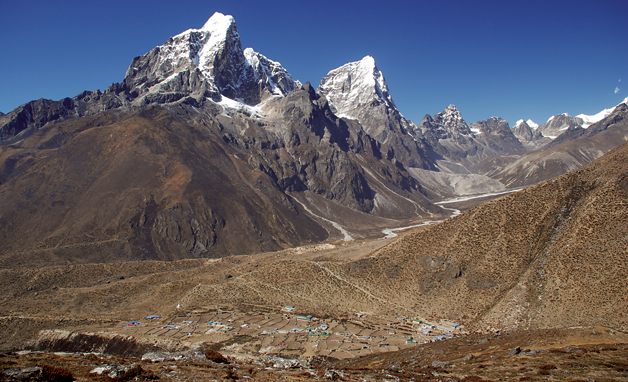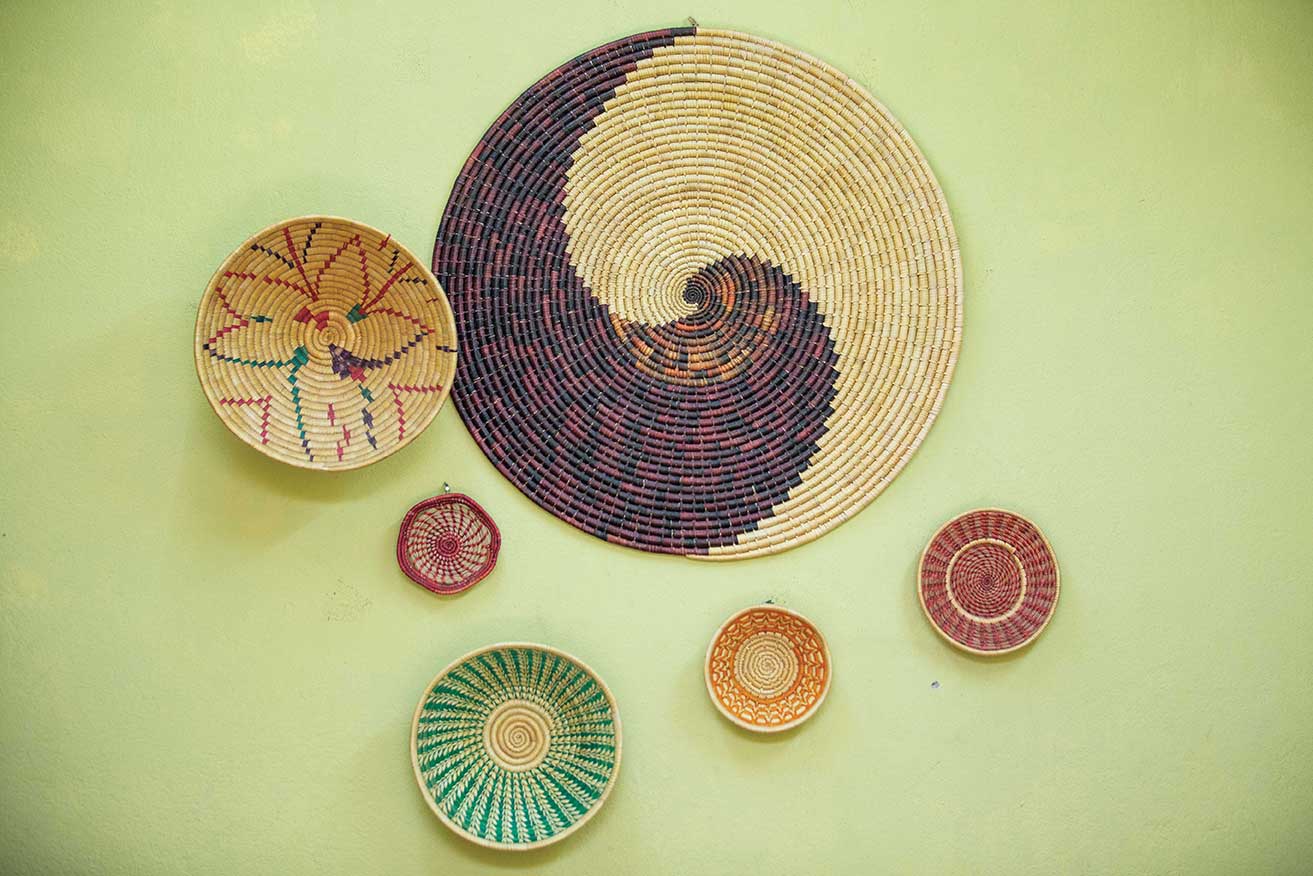 If you’ve trekked in the Himalayas above 13,000 feet (4000m plus), you’ve reached the Alpine Zone, between the upper treeline and permanent snowline. Trekkers to Mt Everest Base Camp, Gokyo Lake and other destinations in the high valleys of Nepal’s Khumbu region have been there. The alpine ecosystem in the upper Imja valley of Sagarmatha (Mt Everest) National Park and Buffer Zone is very diverse and provides excellent habitats for some of the world’s most exotic plants and animals
If you’ve trekked in the Himalayas above 13,000 feet (4000m plus), you’ve reached the Alpine Zone, between the upper treeline and permanent snowline. Trekkers to Mt Everest Base Camp, Gokyo Lake and other destinations in the high valleys of Nepal’s Khumbu region have been there. The alpine ecosystem in the upper Imja valley of Sagarmatha (Mt Everest) National Park and Buffer Zone is very diverse and provides excellent habitats for some of the world’s most exotic plants and animals
Among the most rare, for example, is a medicinal plant that Tibetans call the ‘Snow Lotus’, or Blue Poppy (Meconopsis betonicifolia), used to treat high blood pressure, and the elusive snow leopard (Uncia uncial). In addition, the high altitude pastures around Everest, or ‘Chomolangma’ (as the world’s highest peak is locally known), are important for yak grazing. The Alpine Zone, however, is fragile and highly vulnerable to human abuse by over-grazing and over-harvesting of medical plants, as well as to global climate change.
Adventure tourism is also a threat, especially from high altitude trekkers, mountaineering expeditions and their support teams who, for years, have used the slow growing juniper shrubs as fuel. There is also a problem with the ‘mining’ of alpine turf, with wall construction for lodges and guesthouses and, despite regulations discouraging it, the burning of imported kerosene and gas. Since the establishment of Sagarmatha National Park in 1976, the need for increased conservation and restoration efforts in the alpine ecosystem have been addressed in various books and articles, internationally.
In addition, the recently released National Geographic film, Surviving Everest, focuses attention on the impact of increased tourism on Sherpa communities, culture, lifestyle and environment. Similarly, there is an article entitled ‘The problem of alpine degradation’, by Alton Byers in the book Triumph on Everest: A Tribute from the Sherpas of Nepal. In that article, Byers highlights some of the long-term changes in Khumbu ecology, using comparison photographs taken over the past 50 years to illustrate disappearance of forest and shrubs near villages and religious sites in the upper Khumbu, including popular destinations like Dingboche and Chhukung.
In response to the increasing degradation of the national park’s alpine environments, The Mountain Institute launched a special program called ‘Community-based Conservation and Restoration of Mt. Everest Alpine Zone’ in 2003. This project is located in Dingboche. Its goal is to protect and restore the fragile alpine ecosystem by strengthening local management and conservation capacities.
The project is implemented and directed by local Sherpa communities in partnership with government agencies, local and international NGOs, donor agencies, and the trekking and climbing communities. In 2004 a Khumbu Alpine Conservation Council, committed to the conservation and restoration of the park’s fragile alpine ecosystem, was founded, the first of its kind. In 2006, the Council received a capacity-building grant from the UN Development Program to assist in management, fund raising and project monitoring.
Project activities, run through the Khumbu Council, include protection of fragile shrub juniper, establishment of a kerosene and stove gas depot for tourists and lodges, restoration of the porters’ rest house at Lobuche, wooden bridge improvement, the development of alpine educational materials for schools, establishment of juniper and medicinal plant nurseries, yak-proof demonstration enclosures, workshops on porter working conditions, and enterprise development for herders by which they can earn extra income making and selling juice and jam from the seabuckthorn shrub (locally called akhriloo).
In January 2007, TMI received a grant from the Argosy Foundation to expand the conservation success in the Everest region to alpine regions worldwide. Since then, TMI has started to work in Nepal’s Makalu-Barun National Park and Buffer Zone (MBNPBZ) in collaboration with National Park staff and local lodge operators. During a reconnaissance of the popular Mera Peak region in May 2007, it was found that enormous devastation to the alpine ecosystems has occurred over the past 10 years. TMI then began working with park officials and lodge owners to halt environmental degradation, using participatory methods, introducing alternative energy sources and building the capacity of local people. TMI hopes that these kind of grass-root projects can set a precedent for similar projects in alpine ecosystems throughout the mountain world.
Based on the experience of TMI staff in conservation and the restoration of fragile alpine ecosystem, they have identified three critical needs to achieve the goal of restoring heavily impacted, high altitude regions. They are: (1) the need for detailed ecological and socioeconomic assessments of the effects of climate change, tourism development, over-collection of medicinal plants, and grazing pressure on the biodiversity of alpine systems and their ability to provide ecological services such as medicines and clean water. (2) The need for clear mechanisms to ensure that biodiversity protection mechanisms are integrated into local and national park and buffer zone planning and management processes. (3) The need to ensure that local people have a voice through which to impart their traditional natural, cultural, ecological and economic knowledge in the design and implementation of the project.
This article is based on studies by staff of The Mountain Institute (Kathmandu). The author, Ang Rita Sherpa, is Senior Program Manager of The Mountain Institute and Project Manager for the ‘Community-based Alpine Conservation and Restoration Project’ in the upper Khumbu region of Nepal. He can be contacted at angrita@mountain.org. He thanks A.C. Byers, B. Peniston, D. Thapa, T. Bhutia, S. Subba, S. Thing, B.K. Kulung and B.R. Rai for their roles in implementing the project. Financial support to project activities comes from the UN Development Program, the American Alpine Club, the National Geographic Society, the Argosy Foundation, and private donors. Sagarmatha National Park and Buffer Zone is one of Nepal’s two World Heritage Sites.











